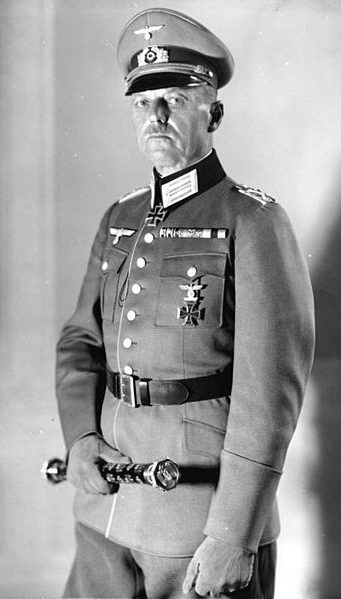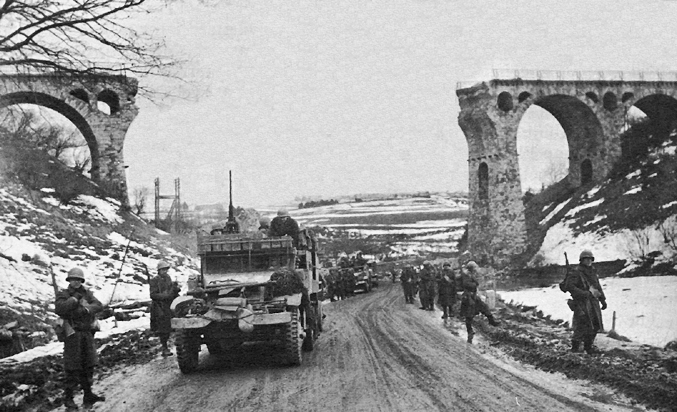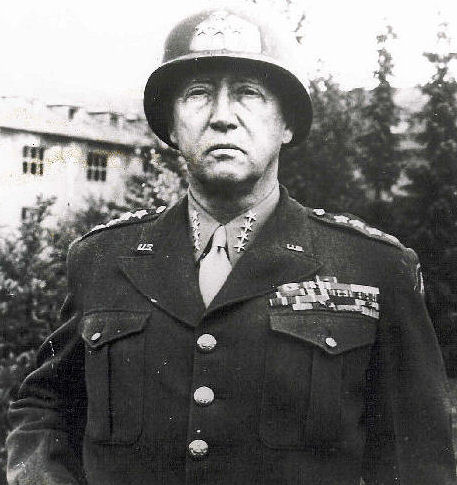
Karl Rudolf Gerd von Rundstedt, Field Marshal in the Wehrmacht of Nazi Germany during World War II. Photo part of the German Federal Archives.
Less famous than the near-legendary Erwin Rommel, Field Marshal Gerd von Rundstedt was nevertheless one of the most formidable of Germany’s generals of World War II, mastermind of the daring Ardennes Offensive—the “Battle of the Bulge”—which inflicted on the American army the heaviest losses it suffered in Europe before General George S. Patton, Jr. succeeded in pounding the offensive into absolute defeat. Captured at the end of the war and asked to name the American commander who had most impressed him, Runstedt did not pause before he snapped back: “Patton was your best.”

The 1st Battalion of the U.S. 26th Infantry Regiment passing through the railway viaduct north of Bütgenbach, Belgium. The railway viaduct was part of the line running from Losheim/Eifel (Germany) to Trois-Ponts, Belgium, and had been blown up by the retreating German troops. (From the Battle of the Bulge.)
In Patton, the American army had precisely the kind of general the Germans most desperately wanted for themselves, a brilliant, innovative, and daring master of modern tactics who possessed the powerfully charismatic soul of an ancient warrior. Carlo D’Este put it into the title of his 1996 biography of the general: Patton had a “genius for war.”…
In the very midst of the great Allied eastward drive, Rundstedt launched the Ardennes offensive during the Christmas season of 1944, hitting the American line at its weakest point and threatening to split the Allied forces in two with an all-out advance targeting the crucial Allied-held port of Antwerp. Patton performed a miracle of tactics, logistics, and human endurance when he turned the bulk of his army, troops exhausted by three months of continual battle and advance, ninety degrees north to launch a bold counterattack into the southern flank of the German advance. The Battle of the Bulge, which began as a stunning catastrophe for the Allies, was converted into a U.S. victory that broke the back of the German army.
Alan Axelrod, Patton’s Drive: The Making of America’s Greatest General (Guilford, Conn.: The Lyons Press, 2009), x, xii-xiii.
Short Stories on Honor, Chivalry, and the World of Nobility—no. 574










